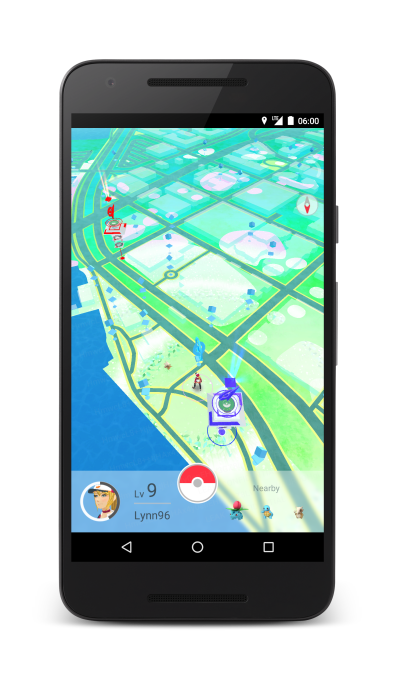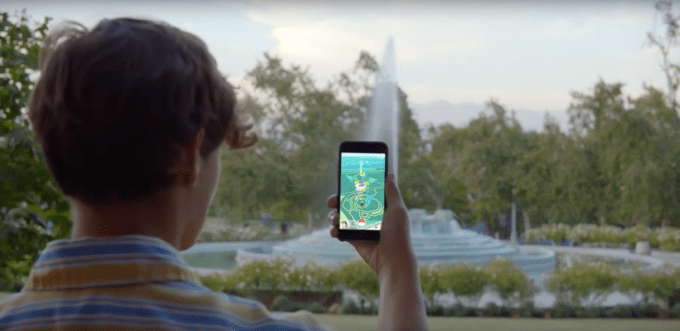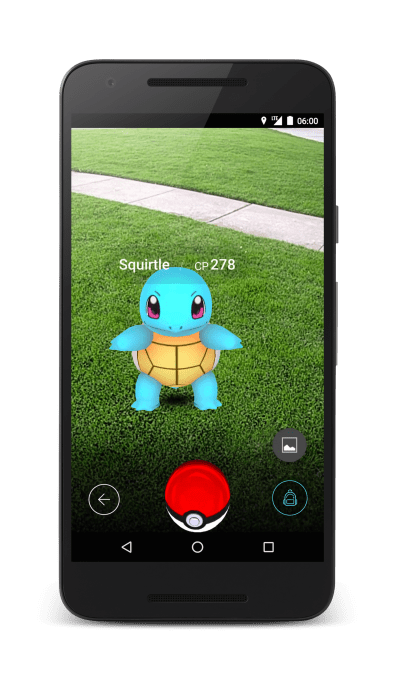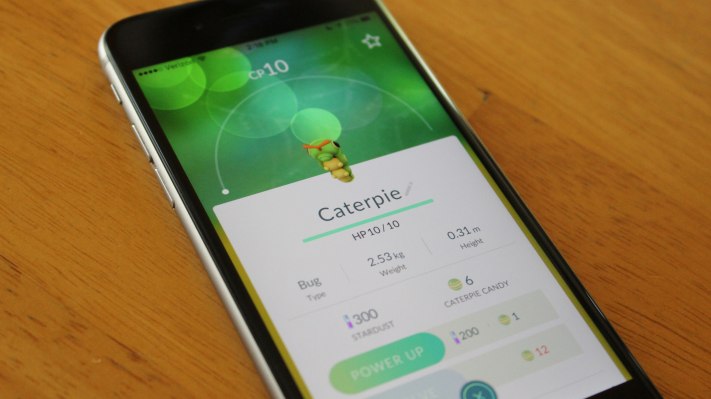If you haven’t seen it already, you will soon when you are walking down the street. Every person you pass who is fervently looking at their phone is likely playing the No. 1 game in the country right now: Pokémon Go.
You might think it’s popular because of the brand. Nintendo, which refused to make a Pokémon game for the longest time on a smartphone, has finally caved and brought its beloved franchise to the small screen. But what may be overlooked amid all that is that the game, on its own, is phenomenally well designed, despite myriad bugs and endless server outages. If you look at all aspects of the game loop — engagement, retention, virality and monetization — it nails pretty much everything on the head. Niantic managed to hit a very rare, exceptional home run on every textbook point of the game’s development.
That’s not an easy feat. Only a few games in the history of the iPhone have managed similar success. The closest analogies are probably Minecraft and Candy Crush Saga, which also rocketed to not only the top of the App Store download charts, but also the top-grossing charts. Pokémon — much like Minecraft before it — launched immediately at the top of the charts. So its immediate success, based on the App Store rankings, isn’t necessarily unprecedented.
So, what makes this game so engaging and, from what we’ve seen so far, potentially very addictive? Let’s break it down into its core pieces.
Engagement
Some of the most popular games have bite-time playing sessions. But the session time in Pokémon Go can essentially be as long as the player wants, because there is a constant way to increase the length of the session time by walking to more pit-stops. That’s a really hard thing to do in a game. Most session times are restricted to levels or gated with lives or energy. For Pokémon Go, there’s just enough friction to inspire players to potentially pay to extend the length of their play session with less work, but also offer them the ability to go out of their way to extend that session time without having to pay.
When I think about the structure of the play sessions in Pokémon Go, I often think of a role-playing game called Persona 4 Golden for the PlayStation Vita. The overall unit of time in the game is a day in the life of your character. The sessions are built into bite-size chunks based on the time of the day — morning, afternoon and evening — and save points are littered through most parts of the game. And the combat sections of the game are also segmented into levels, with the option of leaving a dungeon at any point to save your game and end the playing session. In the same way as Pokémon Go, the game’s session time can basically be extended to as long as the player wants while still keeping the basic mechanics of the game intact. In the case of Persona 4 Golden, that friction isn’t necessary because the player has already bought the game, but for Pokémon Go it’s incredibly well executed.
 Pokémon Go, like other well-designed popular mobile games, offers a quick ramp up that teases a lot of front-loaded rewards to get the player to come through the door and shut it behind them. That’s important to grab their attention, but there are also multiple layers of rewards that keep players wanting to stay in the game. You can collect items in order to power up your Pokémon and evolve them, but it’s also important to level up your own character. There are different layers of currency built into the game that progress along different time curves, giving each layer of progression its own speed and flavor. In that way, players can hit rewards at different increments of the game without feeling trapped in a grind for everything to level up at the same time.
Pokémon Go, like other well-designed popular mobile games, offers a quick ramp up that teases a lot of front-loaded rewards to get the player to come through the door and shut it behind them. That’s important to grab their attention, but there are also multiple layers of rewards that keep players wanting to stay in the game. You can collect items in order to power up your Pokémon and evolve them, but it’s also important to level up your own character. There are different layers of currency built into the game that progress along different time curves, giving each layer of progression its own speed and flavor. In that way, players can hit rewards at different increments of the game without feeling trapped in a grind for everything to level up at the same time.
Amid the entire play session, the game has to stay open. That keeps you from getting distracted and flipping out to other apps. I find myself walking with my phone in my pocket, but with the game open often enough while wearing headphones. Whenever there’s a chime, I take the phone out of my pocket and start playing — whether that’s collecting Pokéballs or trying to capture something new (or some crappy junk Pokémon for the sake of experience). The game world is vibrant and beautiful, making it something easy and fun to see. It’s filled with flair and flashes that are visually stimulating and signal new elements of the game. All this makes the player want to keep their eyes — or ears — glued to their phone, ready to engage with it the moment something new happens.
All of this is great design, and doesn’t even mention the brand equity Pokémon has built up. Nintendo has sold nearly 60 million 3DS units. Pokémon X & Y alone have totaled nearly 15 million in sales. That’s an incredible nearly 25 percent penetration rate for all Pokémon enabled devices. If Nintendo were to barely scratch that with the nearly 2.5 billion smartphones in the world (according to Statista), that alone represents a staggering install base.
Pokémon already is a worldwide phenomenon, and that alone is probably enough to get the player in the door beyond simply encountering other players and hearing about it organically. Pokémon Go currently only supports the original 150 Pokémon as well, tapping into the untapped nostalgia for which players have been waiting nearly a decade.
Retention
An array of user-generated gameplay experiences is critical to building strong retention, and all the pieces are already built into the Pokémon Go experience. Each capture session is unique — the angle of the Pokéball is different, the placement of the Pokémon is different and there’s also an opportunity to have a unique experience tied with the real world. You have probably seen on your Facebook feed screenshots of Pokémon sitting on other peoples’ heads or in their laps. Each capture moment offers a unique player session, and while many will be similar, there’s the tantalizing opportunity to have something truly unique that’s really exciting.
There’s also an incredibly sticky part of user-generated content that exists alongside the game: the actual walk. Each walk a player goes for, in theory, is unique. The environment in the real world is different, the people you run into may be different, the weather may be different, or the time of day. The environment in the game is also different, with Gyms constantly in flux and new Pokémon appearing at different intervals and in different places. Each walk also actively engages the player physically — and exercise naturally triggers a positive feel for your body, adding an additional layer of delight to the gameplay experience.
This is such a new mechanic for a popular game that’s unprecedented. For most games, the user-generated gameplay is restricted to an imaginary universe. It’s a level on Candy Crush Saga that you get that lucky explosive cookie. It’s a player-versus-player round in World of Warcraft where you get that lucky critical hit. It’s a round of Destiny where you are just on fire and keep getting headshots. But all of these take place inside a screen, interfaced by a controller — whether that’s a real controller or a touchscreen.
The mastery curve is also smooth — over time you build a strong array of Pokémon that help you advance further in the game. The end of the game, like the regular Pokémon games, is a moving target, and there’s basically always someone out there that’s slightly better than you. That gives players a constant incentive to continue progressing along the mastery curve.

Virality
What’s also unprecedented is Niantic’s spin on the game’s viral loop. In Pokémon Go, there’s no feature that allows you to extend the life of your playing session by inviting or reaching out to friends. In fact, the social graph is almost non-existent in Pokémon Go. Instead, your in-game social graph is an extension of a supplemented version of your real-world social graph. A smartphone owner sees someone playing the game, becomes curious, downloads the game and plays it — both interacting with other players and inspiring curiosity in other potential new players. And the rest of the time you’re looking at screenshots of what’s happening in the game in your Facebook feed, or texting friends when you managed to catch that rare Pokémon.
You can read stories in many places on the internet of people randomly interacting with each other related to Pokémon Go. I experienced this already when walking around San Francisco, only to have a car drive by with one of the passengers yelling that there was a rare-ish Pokémon down the street (it was an Ivysaur, for those keeping tabs). This is table stakes for the Pokémon Go experience, and it’s what gets new players in the door. This kind of virality is especially powerful because it isn’t limited to an existing social graph. The whole viral loop is augmented in such a way that a non-connected interaction in the real world can lead to a new player, a download and then monetization of that player.
That’s why I t\ink this interpretation of the viral loop mechanic is so fascinating and is going to be so successful. Never before has a game immediately achieved such popularity in such a way that it regularly intersects with the real world. A lot of people consider it to be an augmented-reality experience, and in many ways you could consider it to be that. But it’s not just an experience that uses your camera to play — it’s an experience that crosses the boundary between an imaginary universe and the real world. I think the proper term that should be applied to this would be mixed-reality. The phrase augmented reality just doesn’t give the game enough credit for being able to break that fourth wall and constantly move the player between an imaginary world and the real world.
And it also represents an enormous opportunity for the game if Niantic decides to implement other important aspects of Pokémon, like trading. Without an embedded social graph the game has already grown to immense popularity. Just imagine if it began to add an additional layer of player interaction — even if, again, it only takes place in the real world.
Monetization
 So it’s no wonder that the game has already hit the top of the App Store’s top-grossing charts. There’s a lot going on in the monetization component of Pokémon Go, but again, it nails nearly every angle of attack to get players to make a payment.
So it’s no wonder that the game has already hit the top of the App Store’s top-grossing charts. There’s a lot going on in the monetization component of Pokémon Go, but again, it nails nearly every angle of attack to get players to make a payment.
You can extend the life of your play session with more Pokéballs. You can speed up your growth curve by getting Egg Incubators, further increasing your array of potential Pokémon to further progress in the game. You can increase the rate of the engaging capture sessions by buying Incense.
The same can be said for Lure Modules, which not only represent accelerated progression in the game but yet another way to tap into Pokémon Go’s viral loop. Players congregate around areas — whether for catching Pokémon or building up their Pokéball stock — and that increases the probability that new, curious players will come by and discover the game independent of the App Store or other methods, like Facebook App Install ads. Users paying for this contribute to the entire community of players given the benefit it offers everyone else.
The most important aspect of this is that the gameplay, unlike most of the most-popular mobile and social games, is not gated. Paying Niantic and Nintendo money simply allows players to progress more quickly, but it doesn’t impede their progress overall. Players have an opportunity to progress through the game at their own rate. As the saying goes, you still need the slow boat to China if you’re going to be successful.
Niantic here does such a good job of creating just enough friction that, at the exact moment, it can capture an opportunity for monetization. Players don’t feel compelled to spend money, and instead they’re offered a delightful experience when they elect to spend money. Those eye-popping visuals continue, they keep throwing Pokéballs and they don’t have to wait to see some of the most powerful Pokémon game.
Final thoughts
All this together creates a very powerful, sticky and accelerating game loop that is helping the game grow at such an incredible rate. But there’s another underlying thread amid all this: It bodes very well for holdout franchises to expand into mobile devices amid fear of cannibalizing devices or other parts of the market. Even Final Fantasy, in a way, has found its way onto mobile devices with Final Fantasy Record Keeper. A lot of these mechanics were pioneered in the company’s previous game, Ingress. But it’s hard to deny that all of these at the scale of Pokémon Go make it a completely different experience.
Nintendo, amid the runaway early success of the game, added $9 billion to its market cap. This is such a strong, powerful signal to holdout franchises that haven’t quite entered the smartphone ecosystem. And there’s a good reason to do so: if that 2.5 billion device number from Statista is accurate, it offers such an enormous opportunity that it may be well worth eating up some potential hardware sales.
This is a transition that the advertising market faced in the not-too-distant past. Google is constantly hounded by the need to shift its advertising revenue to mobile devices, in the hope that less-valuable ads can be traded for a larger volume of ads on mobile devices. Facebook has built a business worth hundreds of billions of dollars off its mobile advertising products.
Video game stalwarts will face the same dilemma: Do you trade hardware and console sales in favor of the incredible volume of smartphone users? Is it worth the risk to assume people will still buy your consoles when Mario is available on your phone? Can a company like Nintendo offer an array of experiences that span multiple devices? In this week’s blowout success of Pokémon Go the answer? For now it appears to be rounded up to a Yes.
Alas, there’s no way to mash down+A+B. Get on that, Niantic.
